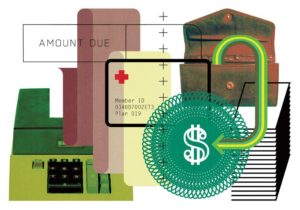We have been unable or unwilling to include social factors in how we support and pay doctors.
In my more exasperated moments of residency, I must admit I was envious not only of what my supervising doctors knew, but also who they treated.
Residents in our clinic, doctors in training just out of medical school, generally picked up patients they cared for in the hospital — with lots of medical problems, little medical care and often without a place to stay. The attending physicians who supervised us, it seemed, built their patient panels handing out business cards in luxury suites at Patriots games. Over time, as we transferred patients from one graduating resident to the next, our panels came to embody the city’s deepest and most recalcitrant social challenges.
Symbol of Good training
This was, of course, good training, if only in the art of seeing patients with six conditions on 12 medications in 15 minutes. But what strained our abilities was not our patients’ medical complexity, but their social problems: They were poorer, less educated, more isolated, from rougher neighbourhoods. We quickly learned that while it’s hard to dose insulin, it’s harder still for a patient who speaks no English, has no refrigerator and regularly has his medications stolen.
High Level of Disadvantage
This dynamic is not unique to clinic, nor to residents versus attending. Across the country, some doctors, hospitals and clinics care for a disproportionate share of disadvantaged patients. But we’ve been largely unable — or unwilling — to consider social disparities among patients in how we support and pay doctors.
A growing recognition that social factors influence health outcomes has coincided with a policy push to hold medical providers more accountable for the care they deliver. These “value-based” payment models try to measure quality, outcomes and costs — and reward or penalize providers based on their performance. They generally adjust for patients’ medical problems, but not social ones.
Value Base Healthcare System
While most experts agree that value-based purchasing is a better way to pay doctors. It also has the potential to worsen health disparities by discouraging providers to care for vulnerable populations. If I am paid for how many stents I put in; or how many patients I see. It doesn’t really matter if my patients live on the street or can’t read the instructions on a pill bottle. But if I’m paid based on how well their blood pressure is controlled and how frequently they’re admitted to the hospital, those things start to matter quite a bit.
“This is something that feels intuitive to clinicians but not always to policymakers,” said Dr. Karen Joynt Maddox, assistant professor at the Washington University School of Medicine in St. Louis. “In general, policymakers have accepted that you need to take medical risk into account. Social risk has been much more controversial, but it contributes just as much, if not more, to health outcomes.”
Harmful practice
Many providers are rightly concerned that caring for disadvantaged patients may penalize them for factors outside their control — and unfairly affect their bottom line. Under all of Medicare’s value-based purchasing programs, for example, providers who treat more socially complex patients suffer higher penalties. And patients with more social risk factors have worse outcomes regardless of who they see.
“These payment models are predicated on making fair comparisons across providers”. Told by doctors and specialist . “Some are literally a zero-sum game. They rank everyone, then separate winners and losers. Failure to take social risk into account can have real negative consequences for clinicians and for patients.”
EDITORS’ PICKS
Doctors who care for disadvantaged populations need more resources to produce comparable health outcomes, but they’re less likely to have them. Their patients are often uninsured or on Medicaid, which pays considerably less than Medicare or private insurance. They may also have a harder time getting their patients access to needed services, like sub-specialty care, diagnostic imaging and nonemergency hospital admission.
There’s some indication that payers are starting to consider adjusting for social risk. For example, in 2016 the Massachusetts Medicaid program started incorporating social factors like disability, poverty and homelessness into how it pays clinicians. Last year, the Centers for Medicare and Medicaid Services began adjusting Medicare Advantage plan ratings for differences in the proportion of their beneficiaries who are dually eligible for Medicare and Medicaid — a proxy for low-income. And the National Academy of Sciences, Engineering, and Medicine recently released a report on how social risk factors could be incorporated into provider payment more broadly. for example, we might stratify public report cards for doctors and hospitals based on the socioeconomic characteristics of patients they serve; or adjust bonus payments for those who take on more disadvantaged patients.
Safety Outlook
But whatever model we might end up adopting, selecting the right types of measures will be important. This probably does not make a sense to adjust for social risk. Assessing whether a patient got aspirin for a heart attack; or the right antibiotics for an infection but it does when measuring how well a patient’s diabetes; or blood pressure is controlled over time. Clinicians could also be rewarded for improvements in care; compared to similar providers; and or compared to their own prior performance. It is instead of for meeting absolute thresholds.
Paying doctors to do better — instead of to do more — is essential for a higher-value health system. But if not done carefully, we risk leaving some patients behind. Moreover better care to them; since patient dealt a bad-hand. They will mean making sure doctors; aren’t playing against a stacked deck.